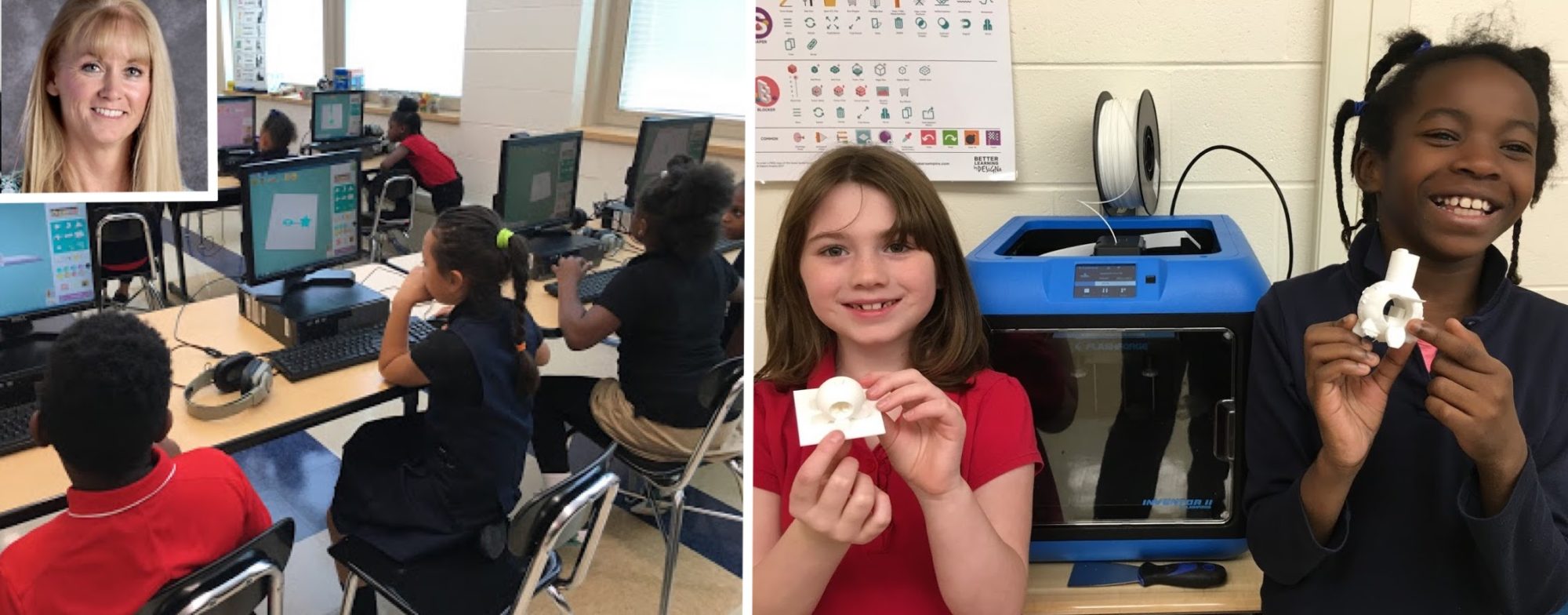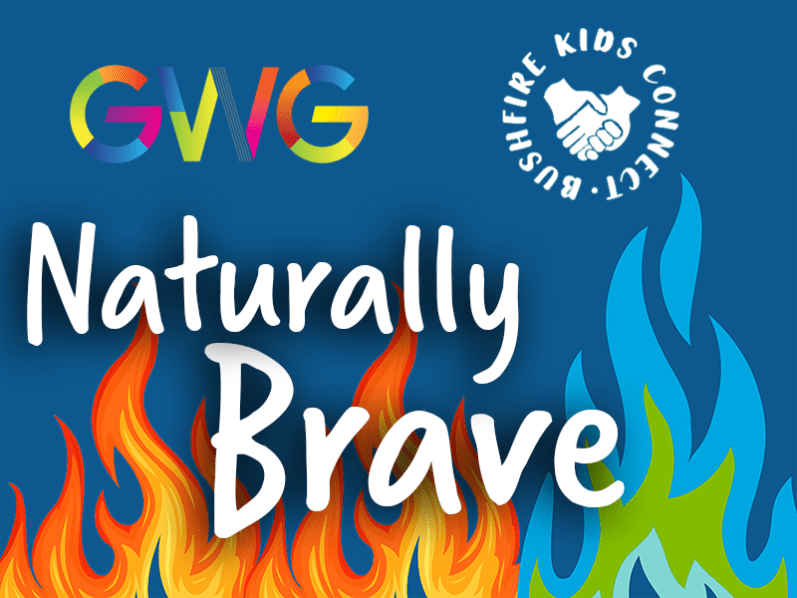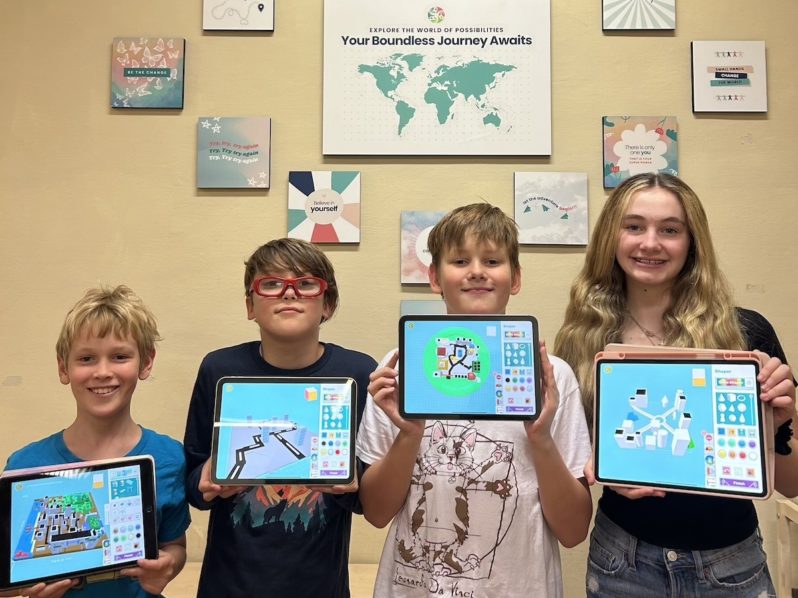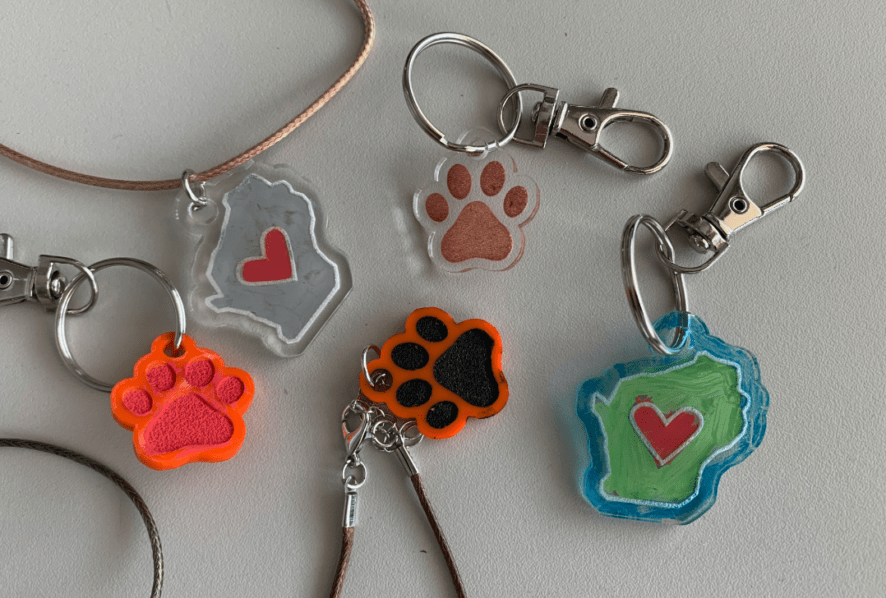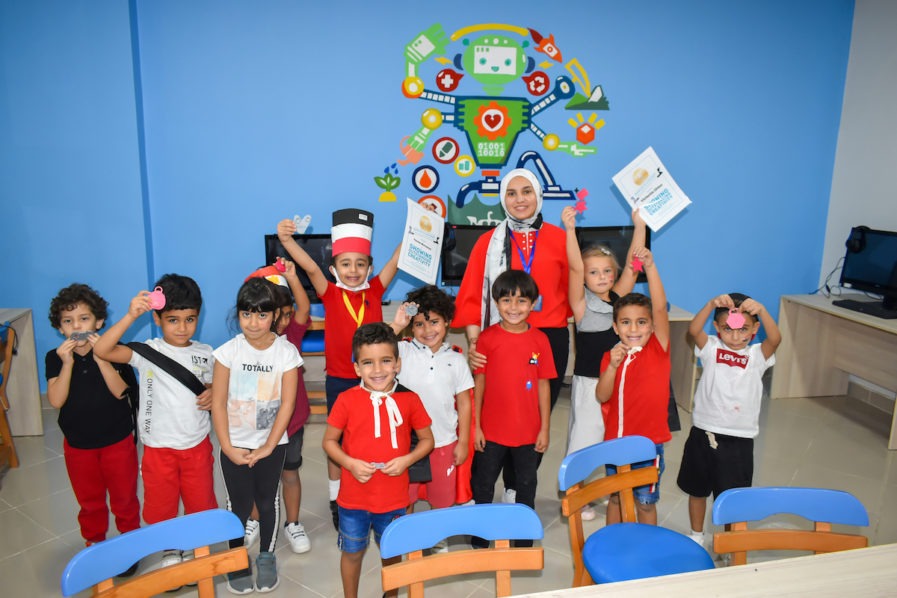Robin McGinnis is North/South/Jr. High Lead Teacher-STEAM for the Mount Healthy City School District and a Makers Empire Ambassador. Robin first came across Makers Empire when she was part of the GE Additive Program 2017-18, a worldwide program delivering 3D technology to schools. Previously, we’ve interviewed Robin about her journey from 3D printing novice to an experienced teacher. We caught up with Robin recently to learn about how she’s currently using Makers Empire to teach STEM in the K-12 classroom.
Teaching STEAM with 3D Printing
Since our last interview with Robin a year ago, her passion for teaching with 3D printing has led to a new, STEAM-focused job within her school district.
Robin explains, “When a few of colleagues saw what I was doing after-school last year they said, “What you are doing is really cool.” I offered to come and help them get started in their classrooms. Soon, I was going into classrooms during my breaks and showing teachers what I was doing …My building principal asked me to present at our building Professional Development day and soon after, at the District Board Meeting. Central Office recognized the momentum STEM and 3D printing was gaining nationally and decided to develop this content area district-wide. A STEM position was then created.”
In her current role, Robin works with pre-school to grade 12 teachers and hundreds of students in their classrooms from Monday to Thursday. On Fridays, she does her lesson planning, research, curriculum mapping and curriculum writing.
Engaging Younger Students in STEAM
Robin likes to use 3D printing with younger students to fast-track their STEM learning and deepen understanding.
“Some of the first graders worked on a bookmark with specific shapes so they were learning about geometry. They had to find certain shapes and talk about them and then had to incorporate those shapes in their bubble wand. 3D printing made it really fun for the kids. By the end of the lesson, they all knew their shapes and they picked it up very quickly. I think it’s instrumental in helping kids engage in their learning and their ability to retain that learning was so much quicker than your traditional teaching (methods),” she says
For younger students, Robin always starts them off learning 3D design with Makers Empire’s 3D software.
“Makers Empire is a more student-friendly version of TinkerCAD for your primary kids,” says Robin. “It’s so much easier and there are games to teach the kids how to design and how to manoeuvre the build plate… TinkerCAD, Sketchup – they are all for upper grades.”
This slideshow requires JavaScript.
Engaging Students who struggle in a typical classroom
These are grades 9-12 that struggle in a typical classroom. It can be challenging to engage and motivate these learners. But Robin has found that Makers Empire is a great tool to use with these students.
“Initially, I was just going to do the two elementary buildings but then it was a bit of junior high, too, and now I’m teaching special education students and (reluctant learners), too,” says Robin.
“These are grades 9-12 kids that aren’t doing well in regular school – they’re more challenging to teach and motivate. So I started them with Makers Empire because I wanted to make STEM fun and engaging and a couple of kids were very resistant at first. One of my students was like, ‘this isn’t really going to apply to me. I want to do my own jewellery business.’ And I said, ‘3D print it.’ And she was like, ‘Oh! I can do that?’ And I said ‘Absolutely. You can make jewellery boxes, too.’ Then they were very interested,” she says.
“For kids that have special needs or are on ILPs (Individual Learning Plans), Makers Empire is perfect for them. For kids who have learning disabilities or who are cognitively delayed, who are several years behind, it works really well for those kids, too… 3D printing allows kids to be so creative and to think outside the box. They get into that Growth Mindset – this is what they have to do but how they get there is completely up to them. And the kids love that. I can’t tell you the number of pictures I have of kids with their hands in the air and they’re like ‘yes! I did this!’. These are kids that are struggling learners and they’re having such success with 3D printing.”
Incorporating STEAM into Other Subjects
While 3D printing is often used to teach STEM and Design and Technology curriculum, it can be used to teach subjects right across the curriculum.
“3D printing can be used in every single lesson you teach. You just have to find a way to incorporate it into the learning,” says Robin.
“For example, when I went to do PD at a high school there was a government teacher, who was like, ‘I teach government.’ So I said to him, ‘do you study landmarks? Do you talk about symbols? You could ask the kids to design the Lincoln Memorial or the Washington Monument or the White House.’ It’s another way of looking at things but it’s a fun way to do it and it can also be done at home.”
This slideshow requires JavaScript.
Encourage Students To Be Part of the Teaching Process
It is said that the best way to learn something is to have to teach it to somebody else: in having to explain a subject you deepen your own understanding and knowledge. Robin likewise believes that learning with 3D technology is an excellent way to empower students and to encourage them to take a leadership role in the classroom.
“The kids are going to pick it up faster than you and it’s so exciting to gain and share that knowledge with them. It’s wonderful for kids to see that they can be part of the teaching, too. It’s a kind of reciprocal thing – it’s not one-way. We often think of traditional teaching as (teachers) dispensing knowledge but this is a reciprocal kind of learning,” she says.
Robin acknowledges that this approach may be intimidating for some teachers.
“Teachers – we are control freaks. It’s your classroom and you’re going to set it up this way and this is how you’re going to do things. (This is) allowing kids to take control and ownership of their learning. It’s kind of letting go of the reigns. It does take a leap of faith for teachers but for me, personally, this has been one of the most wonderful experiences,” she says.
Being at the forefront of teaching STEM with 3D printing in schools has given Robin a new enthusiasm for teaching.
“I’m in my 32nd year of teaching and I feel like a first-year teacher. I was just telling someone that I am so not ready to retire. I know I have been doing this for a long time but there is so much more I want to do and learn!” she says.

